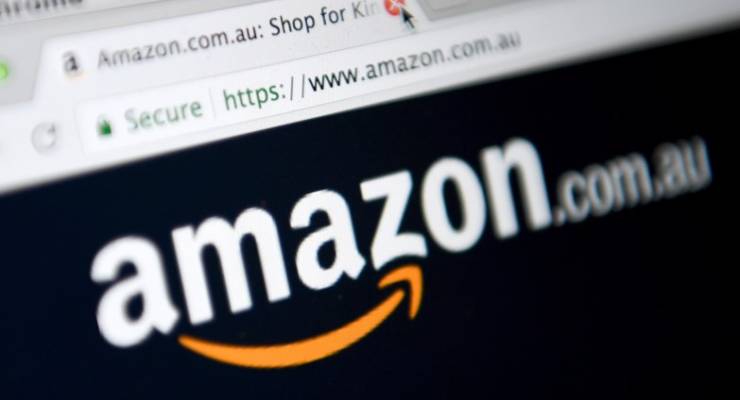
Amazon remains a footnote in the Australian retail environment. A minor player, an also-ran.
Those heady days when headlines warned Amazon would “destroy the retail environment in Australia”? Remembered only with a laugh.
But as Australian retail struggles and strives, the great behemoth is suddenly stirring. Amazon’s latest move, according to a new report in The Australian Financial Review, is to open one of the country’s biggest warehouses in Western Sydney.
The report cited industry sources saying Amazon would build a $500 million, four-level warehouse with as much space as 27 football fields in Kemp’s creek, 39km west of Sydney’s CBD. Amazon declined to comment.
This report comes hot on the heels of the announcement of a new fulfilment centre in Brisbane, stocking 500,000 unique items that will now be able to be delivered faster than before. When it swings into action later this year, the Brisbane warehouse will be Amazon’s fourth, after Melbourne (opened December 2017), Sydney (August 2018) and Perth (December 2018)
“We are committed to improving delivery promises for our customers,” said Amazon Australia director of operations Craig Fuller.
That’s the great threat of Amazon — that it will keep improving. Because in America, Amazon is not just number one in online retail, it is online retail. It sells 40% of everything bought online, and that share has been growing over recent years.
Amazon combines the growth rate of a small company (23% revenue growth last year) and the revenue figures of a giant multinational ($296 billion in the 12 months to March 31) It is by far the most rapidly-growing large company in the world.

At time of writing, Amazon is worth $1.3 trillion, a number bested only by Apple and Microsoft.
The difference between those two and Amazon is profit. Apple reported $22 billion in profit in the most recent quarter, and Microsoft $12 billion. Despite making more revenue than either of them, Amazon made just $2.5 billion in profit.
Why? Because Amazon isn’t built out yet. While Apple’s iPhones are a mature product and Microsoft Office is part of the wallpaper, Amazon is still breaking down walls. It invests to grow, meaning less profit is left over for investors.
That dedication to growth is what brings us the Queensland facility — as large as two soccer pitches — and why Aussie retailers ought to keep glancing over their shoulder.
“If everything you do needs to work on a three-year time horizon, then you’re competing against a lot of people,” CEO Jeff Bezos said in a 2011 interview. “But if you’re willing to invest on a seven-year time horizon, you’re now competing against a fraction of those people, because very few companies are willing to do that … At Amazon we like things to work in five to seven years. We’re willing to plant seeds, let them grow — and we’re very stubborn.”
Online retail is not a fertile field
Amazon is forced to play the long game in Australia, because we are not yet mad for online shopping. Our fondness for physical shops is quaint compared to the rest of the world.
This is odd — we see ourselves as a switched-on country. And it is true we adopt tech fast.
For example, we got to saturation point with mobile phones before the rest of the world, and, later, smartphones. We were the global leader in plastic banknotes and then later we became the vanguard of non-cash payments.
One area where we have been lagging: online shopping. Australia only just ticked over 10% of retail spending online. This compares to 16% in the USA, and 31% in the UK, which is the world leader.
The pandemic might just see us catch up. As the next chart shows, online retail just went through the biggest growth spurt of its life, rising 60%.

Australian online retailer Kogan is making hay out of this period, not only boosting sales and earnings, but also going hunting for acquisitions. It has raised over $100 million to let it buy up any little companies that might help it broaden its customer base.
The risk for Kogan, and indeed for all of Australian retail is that Amazon is now well placed to reciprocate our full-blooded embrace of online shopping. Amazon sales rose by 92% last year, according to documents filed with the corporate regulator.
It keeps expanding its reach too, adding a garden store last year (Bunnings might well pay attention) and a grog shop just days ago (Dan Murphy best be on guard.) Any Australian retailer who ignores Amazon does so at their peril.








We see ourselves as a switched on country? Really? LOL
It’s interesting. I don’t think Amazon’s success is a foregone conclusion. In a sense, they’re not competing against other individual online traders, they are competing against the whole internet. From a customer point of view, providing a smaller company can match prices and roughly compete in delivery timeframes, one is as good as another – and you’re much more likely to be able to get specialist support from a small business than from Amazon, which simply delivers product. Yet, findIng small providers through a browser search is nearly as easy as going direct to a web site.
I think there’s still hope for Australian business.
Its interesting that the graph “What patience looks like” is remarkably similar to a viral growth curve. Amazon is a virus spreading through Australia?